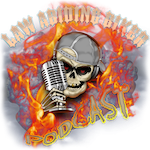 I recently purchased a 2024 Harley-Davidson Street Glide, one of the latest models featuring a redesigned fairing and the new Infotainment Control Unit (IFCU) digital dash system. As someone who values reliability and performance, I opted to replace the stock lead-acid battery with a lithium-ion battery before embarking on a 10-day trip. Over the years, I’ve tested various lithium-ion batteries and prefer them because they are very lightweight, durable, and efficient. (see video below)
I recently purchased a 2024 Harley-Davidson Street Glide, one of the latest models featuring a redesigned fairing and the new Infotainment Control Unit (IFCU) digital dash system. As someone who values reliability and performance, I opted to replace the stock lead-acid battery with a lithium-ion battery before embarking on a 10-day trip. Over the years, I’ve tested various lithium-ion batteries and prefer them because they are very lightweight, durable, and efficient. (see video below)
The First Few Days: Everything Seemed Fine
For the first three days of my trip, the Street Glide performed flawlessly with the new lithium-ion battery. The bike fired up without hesitation, and I had no reason to suspect any issues. However, on the third day, I began to notice that the bike was starting a bit slower than usual—a small concern that I decided to keep an eye on.
SUPPORT US AND SHOP IN THE OFFICIAL LAW ABIDING BIKER STORE
Day 4: The Start of Troubles
On the fourth morning, the bike started up just fine at the hotel. After a quick stop at Starbucks, though, it refused to start. The battery was completely dead. Thankfully, I had one of our compact jump starter packs from the Law Abiding Biker Store, which saved the day. Without it, I would have been stuck waiting for a tow service—something every biker should try to avoid. A jump start pack is an essential tool that every rider should carry to prevent costly and time-consuming interruptions.
The Ride Continues: Persistent Issues
With my Street Glide jump-started, we set out for a long day of riding. Although the bike started after each stop, it did so a bit slower than usual. Additionally, the battery indicator on the digital dash remained on, signaling that something was still wrong. Despite these issues, we pressed on.
The Breakdown: A Dangerous Situation
Later that day, just outside of Greensboro, NC, on a busy multi-lane freeway, my Street Glide suddenly went completely dead—without warning. I lost all power, including the digital dash system, and had to drift to the inside shoulder. Attempting to jump-start the bike again proved futile, as it wouldn’t even power on.
Left behind by my riding group, I quickly contacted them to secure a replacement battery. They managed to find a lead-acid battery and brought it back to my location. Fortunately, I was prepared with my Cruz Tools RTH3 emergency roadside tool kit, also available at the Law Abiding Biker Store. We swapped out the lithium-ion battery for the lead-acid one, and my bike started right up. This preparedness saved us valuable time and allowed us to continue our journey without further delay.
CHECK OUT OUR HUNDREDS OF FREE HELPFUL VIDEOS ON OUR YOUTUBE CHANNEL AND SUBSCRIBE!
The Aftermath: Investigating the Issue
With the new lead-acid battery installed, the battery trouble indicator disappeared, and I had no further issues for the remainder of the trip. However, the situation left me with many questions. Was the problem caused by the lithium-ion battery? Has something changed in the 2024 models regarding the use of these batteries? And if so, why isn’t this information widely known?
Determined to find answers, I reached out to my connections within Harley-Davidson. After two weeks of communication, I received the following statement:
Harley-Davidson’s Statement:
Lithium batteries are not approved by HD fitment for Revolution Max and center-cooled models due to the unique features of the electrical system and software on those vehicles. We continue to evaluate those systems’ interactions, the changes needed to possibly enable fitment, and consumer demand. Any potential future changes to enable lithium batteries will be communicated to the field and dealer network via fitment updates or service bulletins.
My Opinion: What Likely Happened
Based on my experience with lithium-ion batteries, here’s my take on what likely happened. Lithium-ion batteries are “smart” and can go into sleep mode if they are drawn down too far. I believe that’s what happened when my Street Glide suddenly went dead on the freeway. The battery likely went into safe mode, cutting off power to the entire bike. While the charging system is fully capable of charging the battery, the new electrical system in the 2024 models—especially with the IFCU digital dash—might have different protections in place.
 LISTEN TO THE LAW ABIDING BIKER PODCAST!
LISTEN TO THE LAW ABIDING BIKER PODCAST!
These protections could allow the main battery to draw down further before it begins recharging, which might explain why a lead-acid battery, which isn’t “smart” and doesn’t go to sleep, worked without issue. Again, this is just my opinion based on what I’ve observed.
Conclusion: Be Prepared and Stay Informed
My experience underscores the importance of being prepared and staying informed about your motorcycle’s components, especially when dealing with new technology. Whether it’s carrying a reliable jump pack or a comprehensive roadside tool kit, being prepared can save you from potentially time consuming and costly situations. As Harley-Davidson continues to evaluate the use of lithium-ion batteries in their newer models, it’s crucial for riders to stay updated wich is why I made this video and wrote this article.
Join the Free Email Club!
If you appreciate this free information make sure to join the thousands of law abiding bikers that have already joined the free Email Club! You will be notified of new useful motorcycle content and techniques as we put them out. Join the Community now!




I had same problems… will never go with a lithium battery again
Ryan, what was your reason for putting the LI battery in? Was there trouble with your original battery, or was it just youi insatiable desire test stuff and break things? 🤔😳🤣🤣
I really appreciate all you do!
Patreon member
We killed the lead acid battery trailering the bike without putting it in transport mode. We had the Lithium Ion battery on hand.
Ride Safe & Ride Often!
Matt Couchman
Law Abiding Biker™ Team
Helping, connecting, entertaining, and inspiring as many bikers as we can worldwide!
Iphone can’t spell
Good morning Team
I have a Lithium Battery in my 2022 Ultra and so far is good/- but some days it does turn a little slower
Hhhmmm I will take your testing and advise as always— I will ensure to have a New lead Acid Battery handy
Thank you for all you do for the Motorcycle Enthusiast
Lithium batteries used in motorcycles use a chemistry called Lithium Iron (Li-Fe) which is a completely different chemistry from the Lithium Ion batteries used in cell phones and electric cars. Lithium Iron batteries have their quirks which can cause problems if you don’t take them into account.
Advantages:
Lower internal impedance means higher cranking amps. Your motor will crank faster.
Very light weight makes them popular with racers.
Disadvantages:
Low output when cold. In cold weather you need to turn on the headlights for 5 minutes to warm the battery internals before cranking.
Lower reserve power. If your bike electronics draws power when turned off it may draw down the Li-Fe battery overnight. Also if you like to use your audio system for tailgating or use your headlights for setting up your campsite, this battery may not be for you.
I have used a Shorai Li-Fe battery in my Softail for over 5 years. My bike has a weak starter and tends to crank slowly. When I took it to the dealer they would not believe it was the starter and gave me a new battery 2 times. The Shorai battery cranks the motor faster and solves my problem.
OldGreySteve
Interesting as I placed a HD lithium battery on my 2021 RGS without incident never any startup issues .
The 2024 which I have now may be different in allot of ways. Interesting article and sorry you had issues with the ride . Will be looking out for further on this issue !!